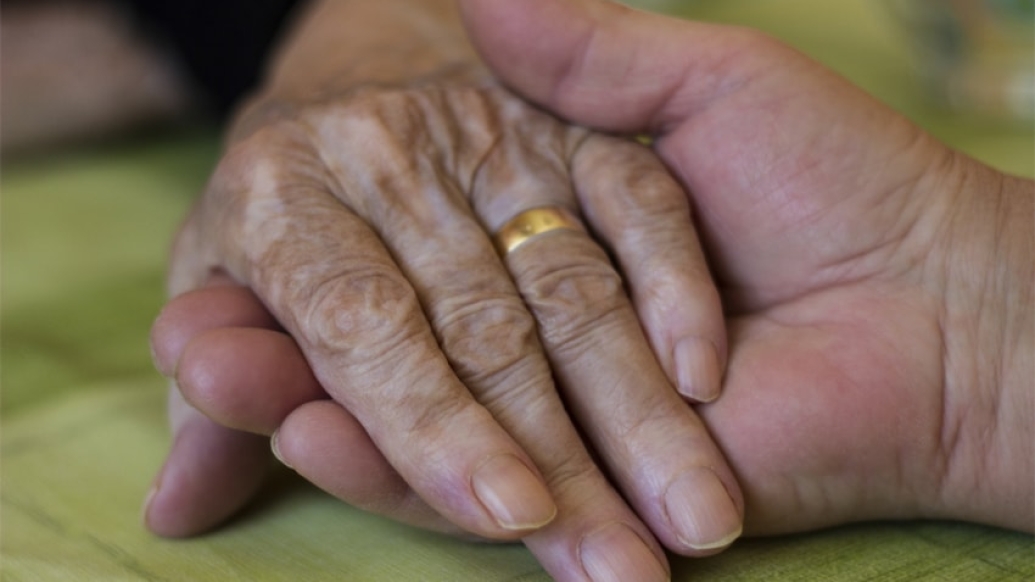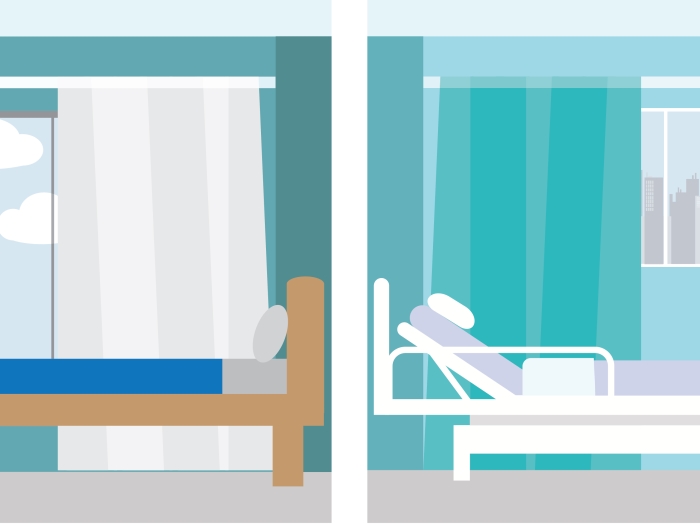Medicare pays thousands more for the end-of-life care of black and Hispanic people than for whites. A new study tries to find out why.
7:00 AM
Author |

Dying in America is an expensive process, with about one in four Medicare dollars going to care for people in their last year of life. But for African-Americans and Hispanics, the cost of dying is more than it is for whites.
SEE ALSO: Hospitals Sending Most Heart Patients to ICUs Report Worst Results
Despite years of searching for the reason, no one has quite figured out why.
A new study reports on the most detailed examination to date.
The cost of the last six months of life is $7,100 more expensive to the Medicare system for blacks, and $6,100 more expensive for Hispanics, compared with whites, a University of Michigan team found. The results were published in the Journal of the American Geriatrics Society.
Unlike other kinds of health-cost disparities, differences in patients' income, education, medical conditions or other individual factors, such as hospice use, didn't explain the disconnect, researchers found. The differences also persisted after examining general health spending per region.
And, in a first of its kind analysis, the team accounted for specific factors related to the unique circumstances that are present at the end of life, such as the use of advance care directives. This still didn't explain cost differences.
As a result, the researchers concluded that something bigger, rooted in the health care system as a whole, must be going on.
"We need to look harder for the causes of disparities in end-of-life care costs, and look at factors on the provider level and health system level, including family dynamics, that may come into play," says Elena Byhoff, M.D., M.Sc., now at Tufts Medical Center, who led the study while she was a Robert Wood Johnson Clinical Scholar at U-M's Institute for Healthcare Policy and Innovation.
Byhoff and her colleagues, including Kenneth Langa, M.D., Ph.D., and Theodore Iwashyna, M.D., Ph.D., hope their study will add to the broader conversation about encouraging good patient-provider-family interactions in patients' final years, including advance planning for end-of-life care.
Previous work by Langa and others has shown that end-of-life care costs tend to be lower for patients with advance wishes to limit treatment. In the new study, whites were twice as likely as blacks and Hispanics to have an advance directive document in place.
New Medicare coverage for doctor visits that include such discussions may help, Byhoff says. But providers must also act on patients' wishes as spelled out in advance directives, and families must understand and honor those wishes when the patient can no longer voice an opinion.
A long-term look
Many see patient preferences as a key factor in end-of-life cost disparities, but this is difficult to study.
The U-M team baked them into their analysis through data from the Health and Retirement Study, based at the U-M Institute for Social Research.
They gathered data from interviews with more than 7,100 seniors over age 65 with traditional Medicare coverage who took part in the long-term, nationally representative study and died sometime during a 14-year period that ended in 2012.
SEE ALSO: 30% of Female Physician Report Sexual Harassment at Work
They also used HRS interviews with the seniors' survivors, which allowed them to find out if the death had been expected, if the patient had discussed end-of-life treatment preferences with survivors, and if they had a formal advance directive in place when they died.
Then, the researchers matched each senior's survey data with his or her Medicare data, from doctor visits and hospital stays to prescription drugs and home, hospice and nursing home care. HRS participants consented to this analysis as part of taking part in the study.
The researchers used a Dartmouth Institute-developed End-of-Life Expenditure Index to correct for regional variations in care costs for people in their last year.
In all, 78 percent of the people studied were non-Hispanic whites, 14.5 percent were non-Hispanic blacks, 4.7 percent were Hispanic and 2.8 percent were members of other racial or ethnic groups.
We need to look harder for the causes of disparities in end-of-life care costs, and look at factors on the provider level and health system level, including family dynamics.Elena Byhoff, M.D., M.Sc.
In-depth analysis
At first glance, without correcting for any differences between groups, Medicare costs for blacks in their last six months of life were 35 percent higher than for whites. Costs were 42 percent higher for Hispanics.
Cost differences were cut in half after the researchers accounted for a wide range of demographic, socioeconomic, geographic and health status differences among the people in each racial and ethnic group. Still, the final months of a black person's life cost the Medicare system 20 percent more than those of a white person. The difference was 21 percent for Hispanics.
That left "patient preferences" as the last factor to take into account. The researchers bundled together the presence of an advance directive, discussion of end-of-life treatment preferences, and if a death was expected, to reflect patient preferences. They did not have access to the advance directives themselves.
But still, the disparities persisted. The Medicare system paid 22 percent more for the care of a dying black senior, and 19 percent more for the care of a dying Hispanic senior, than they did for a white senior who matched them in more than 20 ways.
That disparities continued even after taking into account so many factors makes end-of-life care different from other types of care, where factors such as income, education and ZIP code explain much of the difference in outcomes and spending among racial and ethnic groups.
Discovering which factors make the most difference in the last months of life will mean more research. In the meantime, the researchers hope the findings will help encourage more patients, providers and families of all racial and ethnic backgrounds to start the conversation before it's too late, and uphold the wishes of the dying when they're known.

Explore a variety of health care news & stories by visiting the Health Lab home page for more articles.

Department of Communication at Michigan Medicine
Want top health & research news weekly? Sign up for Health Lab’s newsletters today!





